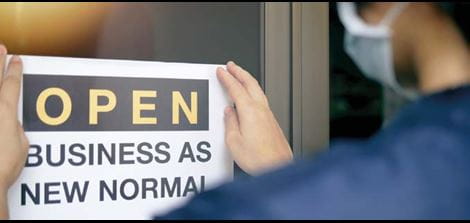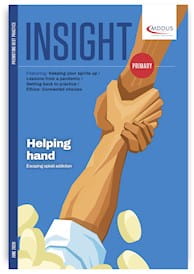 WHILST many employees
have been furloughed or
have been working from
home during the COVID-19
pandemic, medical practices
have been continuing to operate – albeit it
in different ways from normal.
WHILST many employees
have been furloughed or
have been working from
home during the COVID-19
pandemic, medical practices
have been continuing to operate – albeit it
in different ways from normal.
As lockdown measures gradually become less stringent, now is the time for practices to start planning ahead for how to ease staff back into working life.
SAFE TO RETURN?
Some staff will still be unable to return to work if they have symptoms (seven days) or if anyone in their household has symptoms (14 days). These employees should receive statutory sick pay (SSP) from day one as a minimum but paying contractual sick pay should be considered.
Those who received shielding letters should follow the government guidance that applies in their area. The latest NHS guidance is that these employees should continue to receive full pay, even if they are unable to work from home.
Pregnant employees do not automatically need to stay away from the workplace but if there are health and safety concerns then other options, such as working from home, should be considered. If adequate changes can’t be made to protect the employee, then they should remain at home on full pay.
CHILDCARE
As medical practice staff are deemed key workers, they should already have access to childcare places. This should be further alleviated as schools start to reopen. For those employees who say childcare is still a problem, speak to them to find out their concerns and to ascertain what measures can be put in place to allow them to return. This could include working from home or flexible working. If the employee still refuses to return to work, then they could consider taking annual leave or parental leave. Otherwise the leave will be unpaid.
ANXIETY
You may have some employees who do not fall into any of the above categories but are resistant and anxious about returning to work. Remain open minded and reasonable. Set up a meeting with the employee to discuss their concerns and offer reassurances as to the safety measures the practice has put in place. Consider any further suggestions the employee may have. Other options may be again working from home, reduced hours or amended duties.
If the employee still refuses to come in, with no valid reason, this may lead to disciplinary action for unauthorised absence or possibly a capability dismissal but advice should be sought before taking any action. Employees with genuine health and safety concerns will have employment protection and they must not be subject to any action or detrimental treatment.
HOLIDAYS
During this time, normal employment rights apply and staff continue to accrue holidays. Most practices have been advised that many of the bank holidays are being cancelled and staff may be required to work. Any employee working on a bank holiday should be paid in accordance with their contractual right (so normal time or double time) and they will be required to receive a day back in lieu for working.
Many employees may be reluctant to use annual leave, but practices don’t want a bottleneck of requests later in the year. Encourage staff to take holidays that are already booked. Or consider asking them to take, for example, a week’s holiday by the end of July. Those who refuse can be required to give double the normal notice period, so 10 days’ notice for five days’ holiday.
But bear in mind that the purpose of a holiday is for the employee to enjoy rest and relaxation, which may not be so easy in the current situation. It would be unreasonable to ask staff to take the bulk of their holiday entitlement during the lockdown period. The Government has also advised that staff will be able to carry over four weeks’ annual leave over a two-year period if it is not practical for them to take the leave during the holiday year.
OFFICIAL GUIDANCE
The Government has provided guidance on the steps that workplaces should take for employees returning to work, which many medical practices may already be doing. These include:
- Working from home where possible. Staff who are unable to do this can travel to work
- Carry out a COVID-19 risk assessment to establish what safety measures need to be put in place
- Maintain two metre social distancing where possible – this may include re-designing workspaces, staggering start times, creating one way walk-throughs, opening more entrances and exits, or changing seating layouts in break rooms.
- Where employees are unable to be two metres apart, practices should look at erecting plexiglas barriers in shared spaces, creating shift patterns, fixing teams to minimise the number of people in contact with one another or ensuring colleagues are facing away from each other
- More frequent cleaning, paying attention to areas such as door handles and keyboards. Handwashing facilities or hand sanitisers should be available at entry and exit points.
Stay safe, and remember the MDDUS employment law team are here to help with any queries on advice@mddus.com
Liz Symon is an employment law adviser at MDDUS
This page was correct at the time of publication. Any guidance is intended as general guidance for members only. If you are a member and need specific advice relating to your own circumstances, please contact one of our advisers.
Read more from this issue of Insight Primary

Save this article
Save this article to a list of favourite articles which members can access in their account.
Save to library


